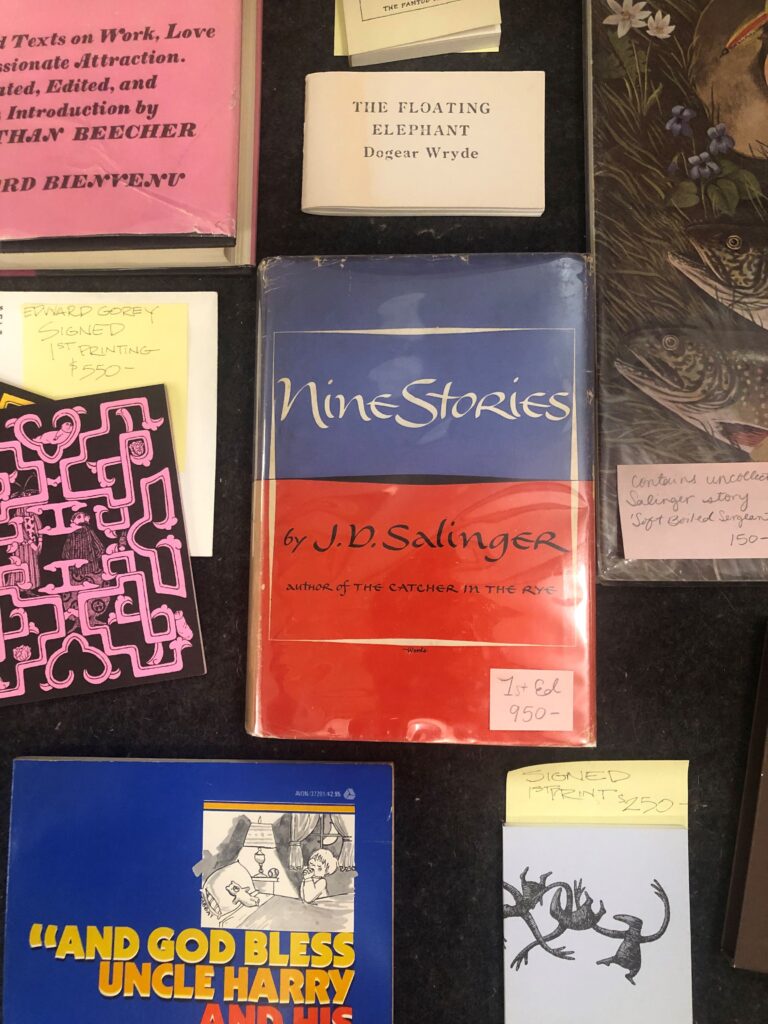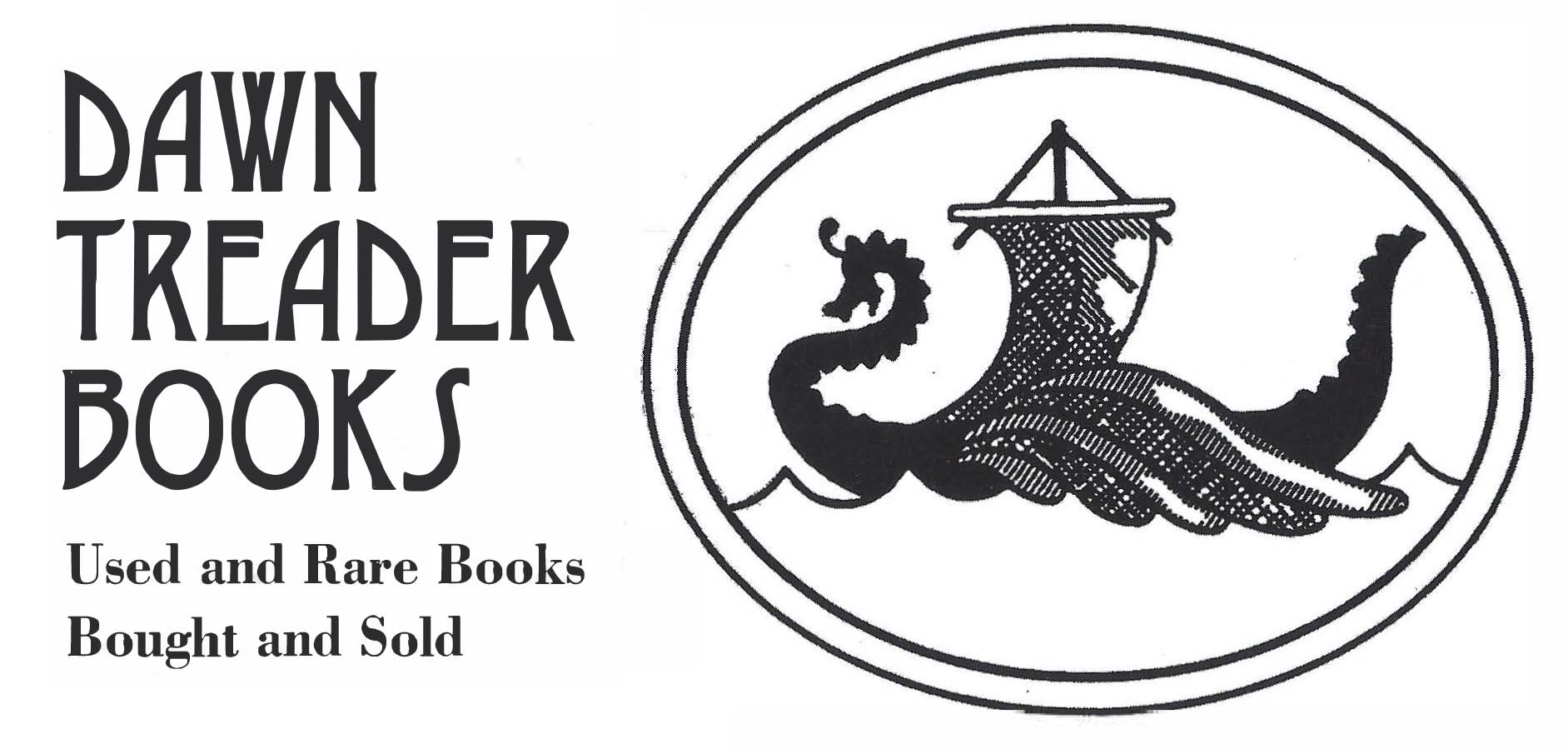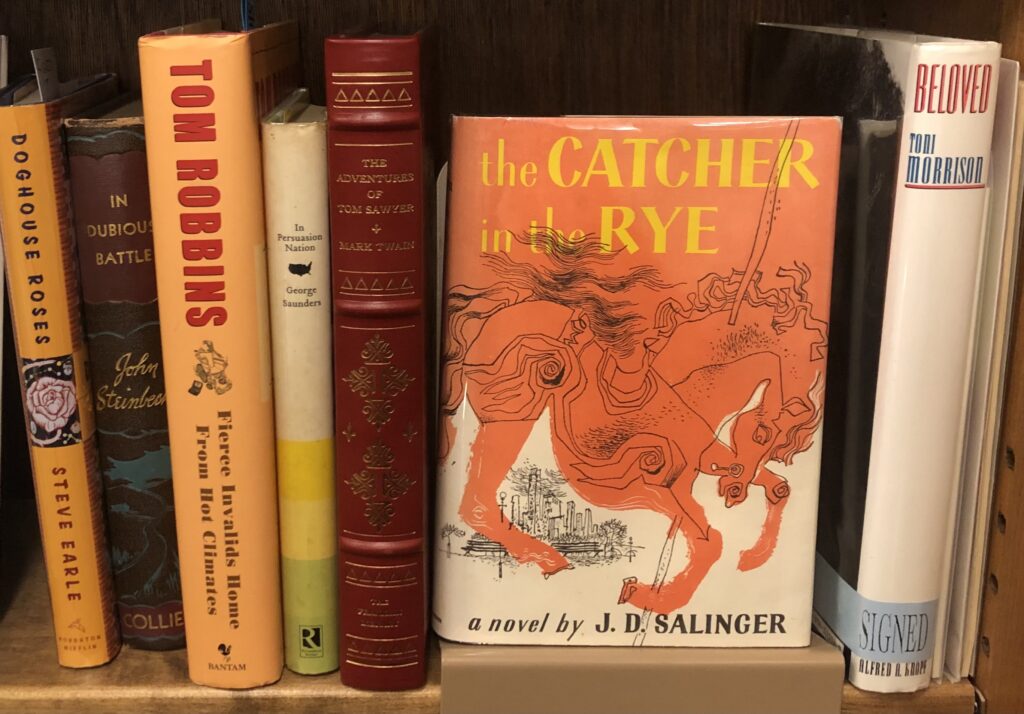by J.D. Salinger
First Edition | Little, Brown and Company | 1953
Call, email, or visit us in the store to buy this book!


In 1948, J.D. Salinger wrote a story so good that the New Yorker requested first rights to publish every subsequent story he would write. Five years later, the famed “A Perfect Day for Bananafish” was given first billing in Nine Stories, Salinger’s story collection follow-up to his smash hit novel, The Catcher in the Rye. If Catcher in the Rye earned Salinger his membership in the annals of literary history, Nine Stories cemented it, establishing him as a writer with uncommon abilities to draw out the joys and sorrows of the human experience. The collection explores themes that were particularly poignant in the aftermath of WWII (in which Salinger himself fought), complicating conceptions of innocence and culpability, violence and trauma, death, madness, genius, and love. Many of these stories — seven of which were published in the New Yorker, per the magazine’s wishes — are classics among not only readers but writers as well, who study their innovative voice, their structure, and their play between the dark and the light.
The stories in Nine Stories are not only linked thematically, but by family ties. “A Perfect Day for Bananafish” introduces readers to the Glass family, who would go on to occupy Salinger’s creative mind for the rest of his literary career. Seymour Glass is a veteran with all the hallmarks of PTSD, which displays itself in bouts of strange and concerning behavior. He returns in many of Salinger’s later stories: Raise High the Roof Beam, Carpenters, Seymour: An Introduction, and Franny and Zooey. Likewise, other members of the Glass family weave through the pages of Salinger’s various stories and collections — Franny and Zooey Glass, Walter Glass, and Beatrice Glass Tannenbaum, to name a few. “Buddy” Glass, who narrates Zooey and is a protagonist in Raise High the Roof Beam, Carpenters, and Seymour: An Introduction, is revealed to be the writer of at least three stories from Nine Stories, and is considered by many to be a stand-in for Salinger.
While pieces of truth from Salinger’s life are scattered throughout his stories, the author himself was famously resistant to public perception. He published his last story, “Hapworth 16, 1924,” in 1965, but continued writing for years, reportedly completing many more novels and stories for his own pleasure or to be published posthumously. Some of these featured members of the endlessly compelling Glass family. It is widely agreed that Salinger’s fascination with the creation of these Glass lives, loves, and tragedies influenced the future of the literary landscape and redefined the possibilities of what a short story can do.
Come touch a piece of this history in the Dawn Treader’s first edition of Nine Stories, in which you can see Seymour Glass’s very earliest appearance between the boards of a book.

